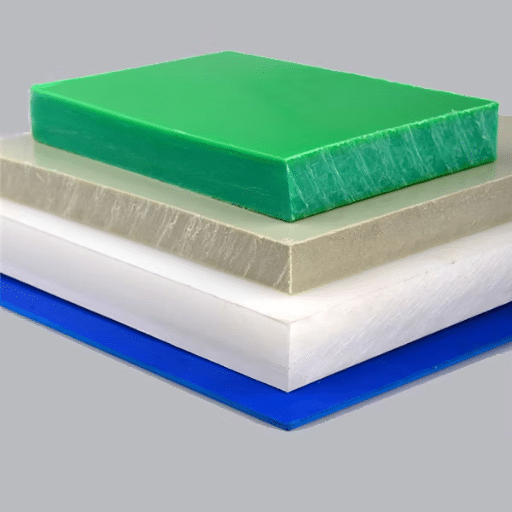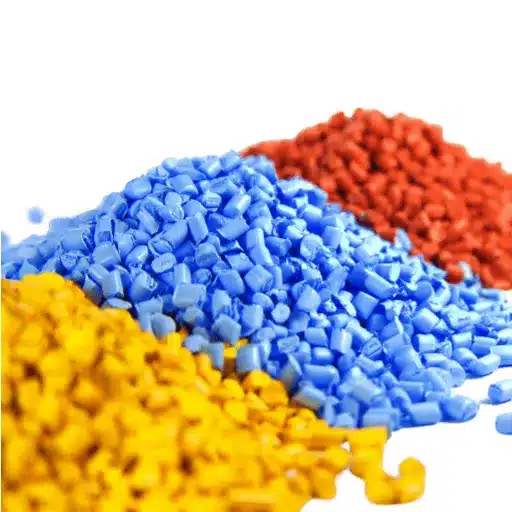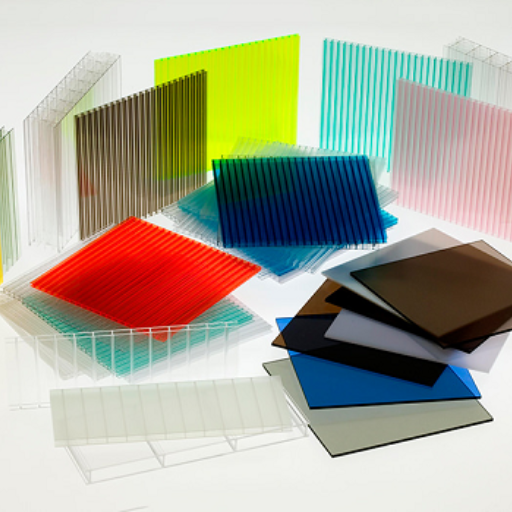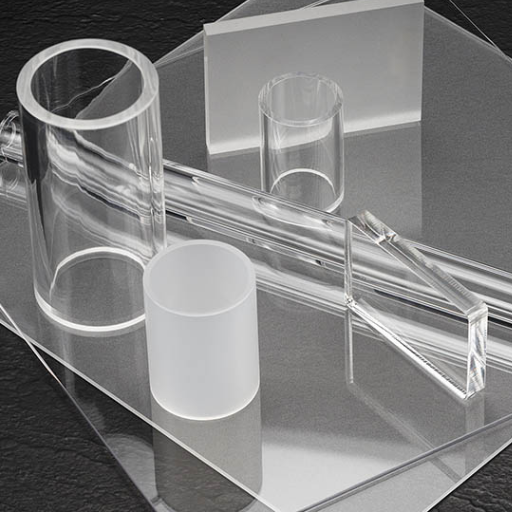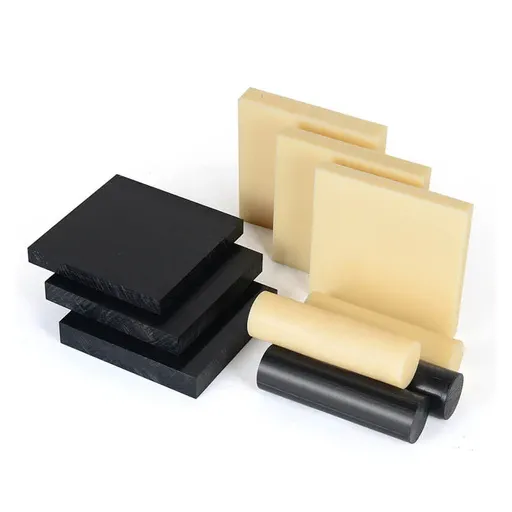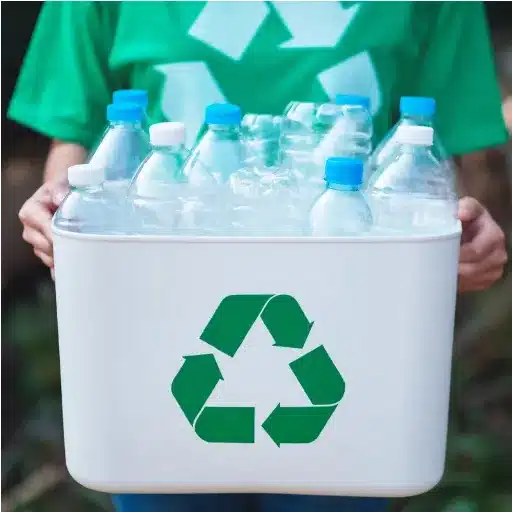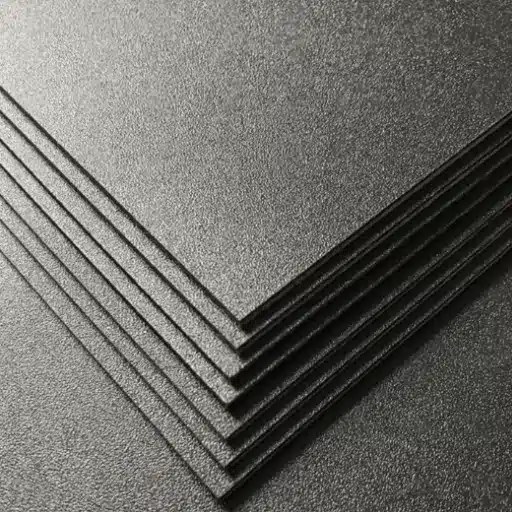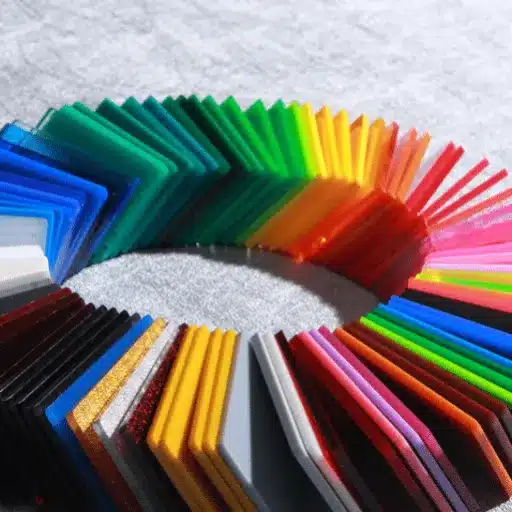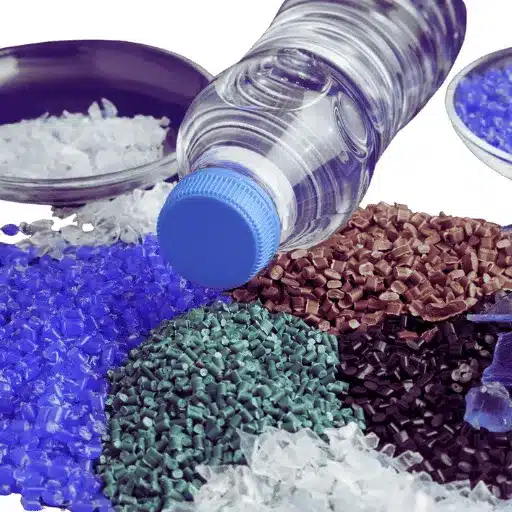Versatile and durable materials make good fit in a large variety of industries. Thanks to its strength, impact resistance, and adaptability, ABS finds its applications in automobile parts and consumer electronics alike. What is this magical material that is so advantageous to us, and is it actually much better than other plastics? In this blog, we will look at ABS plastic and understand its peculiar properties, a multitude of uses, and comparative study with other materials. The article will serve manufacturers, designers, or the mere layman who seeks a lucid and straightforward insight into ABS plastic and its gigantic strength.
Introduction to ABS Plastic
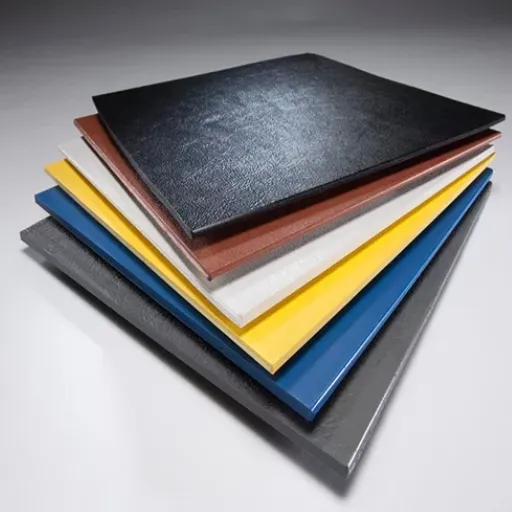
What Is ABS Plastic?
The term “ABS” stands for “Acrylonitrile-Butadiene-Styrene,” a difficult thermoplastic polymer widely used across industries. It is made from three monomers: acrylonitrile, butadiene, and styrene. They impart specific properties to the material. Acrylonitrile provides chemical resistance and thermal stability, butadiene imparts toughness and impact resistance, whilst styrene gives its rigidity and smooth glossy finish.
🔬 Key Characteristics of ABS:
- Strong yet lightweight construction
- Stands high temperatures fairly well
- Easily moldable for various applications
- Excellent ease of machining
- Cost-effective manufacturing solution
These characteristics make the material strong yet lightweight. ABS plastic is used in automotive parts, consumer electronic equipment and 3D printing. ABS is much appreciated for all its properties such as its ease of machining, strength and affordability.
Composition of Acrylonitrile-Butadiene-Styrene
Acrylonitrile Butadiene Styrene (ABS) is a terpolymer made primarily from three monomer units that impart characteristic properties to the material. Their proportions vary depending upon the use or application, giving manufacturers leverage to amend the properties of the final product accordingly.
| Monomer Component | Primary Function | Key Benefits |
|---|---|---|
| Acrylonitrile | Chemical and thermal stability | Resists heat and corrosive agents |
| Butadiene | Flexibility and toughness | Provides impact resistance without cracking |
| Styrene | Rigidity and structural strength | Provides smooth glossy finish |
Recent Developments: According to the most current data, the modification in ABS formulation has included additives and stabilizers to improve its resistance to UV and recyclability. These changes give way to mounting environmental concerns, while still maintaining ABS with its versatile functions. Due to its adaptable nature, strength-to-weight ratio, and easy processing, ABS still ranks among the very popular engineering plastics.
Key Properties of ABS Plastic
ABS plastic possesses a unique set of properties that demand its usefulness in various industries. Its key characteristics are:
⭐ Essential Properties of ABS:
1. High Impact Resistance
ABS can take great physical impacts without cracking or breaking; hence, products requiring durability are made from ABS: helmet shells, automotive components, etc.
2. Lightweight and Strong
Though it weighs very little, ABS can offer great strength and therefore enables the most efficient use of material in manufacturing.
3. Thermal Stability
Glass transition temperatures of ABS are above 100°C, giving it the ability to maintain structural integrity over temperatures encountered in day-to-day life or industry.
4. Ease of Processing
It is fairly simple to mold this plastic using designs involving 3D printing, CNC machining, and injection molding.
5. Fine Appearance
ABS provides a smooth surface finish that can be dyed or painted to make it beautiful in ultimate finishing.
6. Chemical Resistance
It resists many chemicals that make it all the more precious for use in environments involving household cleaning agents or automotive fluids.
These properties, in conjunction with increased recyclability and environmental compatibility, continue to make ABS a very useful material in multiple industries.
Mechanical Properties of ABS Plastic
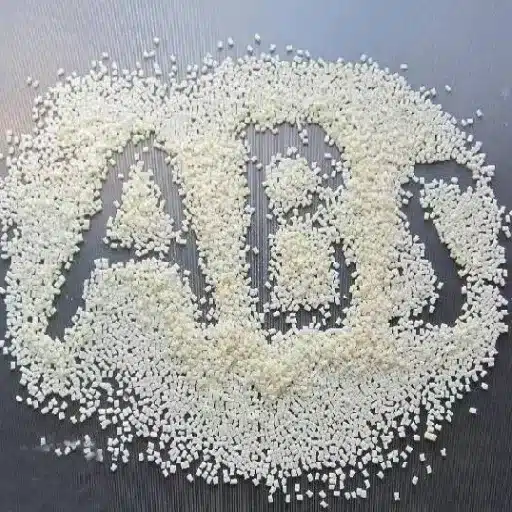
Tensile Strength of ABS
The tensile strength of ABS plastic is considered to be very high. This allows it to be utilized for a variety of heavy-duty applications. Tensile strength is a force to break a material under tension.
📊 Tensile Strength Specifications:
| Property | Range | Significance |
|---|---|---|
| Tensile Strength | 29.8 MPa – 43 MPa | Withstands large strains without deformation |
| Variation Factor | Depends on formulation | Different processing methods affect strength |
This range is strong enough for ABS to undergo large strains without deformation, hence applications such as automotive components, consumer electronics, and industrial equipment exist with this material. When combined with durability and flexibility, these characteristics make ABS suitable for structural applications that require both strength and resilience.
Toughness and Durability
In the past, ABS plastic had enjoyed widespread usage thanks to its reputed toughness and durability. It excels at absorbing impact without failure. The latest data shows that ABS retains extraordinary mechanical properties over a broad temperature spectrum, keeping its structure through the extremes of cold and heat.
Industrial Significance: This is vital in particular industries like the automobile and building, where materials frequently confront harsh environmental conditions. By its abrasion resistance, ABS has proved itself in working sites where millions of abrasive wear tests demand durability where toughness and durability are at stake.
Comparison with Nylon and Other Engineering Plastics
Comparing ABS (Acrylonitrile Butadiene Styrene) with nylon and other engineering plastics comes with the standpoint of application—mechanical properties and chemical resistance. ABS boasts high impact resistance and toughness; thus, an application where durability is desired, such as automotive trims or camera housings, will work well with ABS.
| Material | Strengths | Considerations |
|---|---|---|
| ABS | High impact resistance, easier processing, better chemical resistance, lower cost, faster production cycles | Less thermal stability than nylon, not transparent |
| Nylon | Superior thermal stability, excellent wear and friction resistance, higher tensile strength | Absorbs moisture affecting dimensional stability, more expensive |
| Polycarbonate | Transparency, high impact resistance, superior heat resistance | More expensive than ABS, requires specialized processing |
💡 Material Selection Factors:
- Nylon: Best for gears, bearings, and bushings where friction resistance matters
- ABS: Better for impact resistance and dimensional stability in structural applications
- Selection Criteria: Application requirements, environmental conditions, mechanical demands, and costs
Ultimately, the choice of use between ABS or nylon or anything else essentially remains dependent on the application requirements, including environmental conditions, mechanical demands, and costs. Recently analyzed data sustains keeping both ABS and nylon significant for modern-day industries due to their complementary strengths and maintains their observance in engineering applications today.
Applications of ABS Plastic
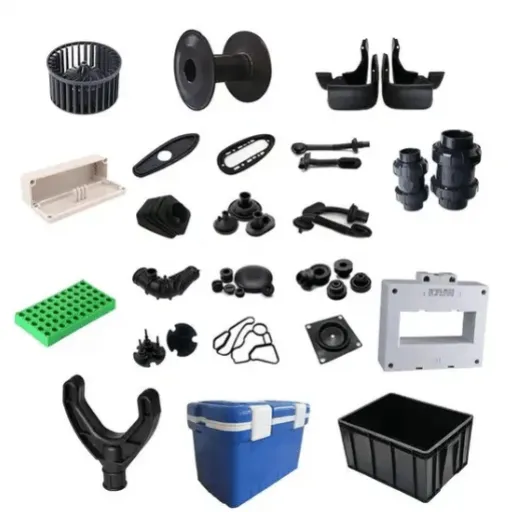
Common Uses in Manufacturing
ABS plastic readily finds favor across many industries precisely because of its fine balancing of strength, stiffness, and impact resistance. Based on recent search trends, ABS undergoes production for use in various applications where durability and aesthetic aspects matter.
🏭 Primary Manufacturing Applications:
Automotive Industry
Dashboards, wheel covers, interior panels where durability and aesthetic aspects matter
Consumer Electronics
Keyboard keycaps, camera housing, phone cases providing protection against physical abuse by daily use
Toy Manufacturing
LEGO bricks being a classic case demonstrating the adaptability of ABS in creating very precise and sturdy parts
ABS, therefore, continues to provide a commercial answer to newer manufacturing demands in every instance.
ABS Injection Molding
The ABS polymer is one of the famous polymers used in injection molding because of its balanced mechanical properties and processability. ABS offers high impact strength, high rigidity with low weight, thereby empowering the makers to design strong yet intricate parts for many uses in automotive, electronics, and consumer goods.
⚙️ Injection Molding Advantages:
- High Dimensional Stability: Molded parts maintain shape even under temperature and stress cycles
- Additive Compatibility: Works with various additives and colorants for customization
- Fast Processing: Enables large-scale production at low costs
- Good Flow Characteristics: Efficiently fills complex molds with intricate designs
- Environmental Benefits: Recyclability and minimal environmental impact during processing
Newer processing methods mean ABS can be processed quickly and therefore in large quantities, keeping costs low. Given also its recyclability and minimal environmental impact during processing, it is clear why manufacturers still see ABS as a prime choice in sustainable manufacturing.
Industrial Applications of ABS
Being highly durable, strong, and versatile, ABS is a material that finds its application in many day-to-day situations. A very special consideration is given to uses in various industrial sectors where performance and reliability are critical.
| Industry | Applications | Key Benefits |
|---|---|---|
| Automotive | Dashboards, wheel covers, interior trimming | Durability and aesthetic appeal |
| Electronics | Televisions, computer monitors, printers | Tough protective casings |
| Toys | LEGO bricks, building blocks | Precision and sturdiness |
| 3D Printing | Prototyping and end-use parts | Excellent molding ability and strength |
The application of ABS across industries speaks volumes about the importance ABS holds for modern manufacturing and product design.
Advantages and Limitations of ABS Plastic

Benefits of Using ABS
ABS plastic presents a myriad of perks that have rendered it one of the most sought-after materials used in various industries. Its biggest asset has been said to be its strength-to-weight ratio, meaning that the plastic bestows a degree of durability upon the end products while being exceedingly lightweight.
✅ Key Advantages of ABS:
Exceptional Strength-to-Weight Ratio
Provides durability while remaining lightweight, high utility in applications ranging from automotive to household items
High Impact Resistance
Ensures products can endure rough handling or sudden unforeseen drops
High Versatility
Easily moldable, machinable, and 3D printable, reducing time and costs of production
Heat and Chemical Resistance
Enhances the array of working environments in which the plastic is usable
Recyclability
Can be recycled and repurposed to some extent, aiding sustainability initiatives if handled responsibly
Cost-Effectiveness
Relatively low price has made ABS a global favorite among engineers and designers
Disadvantages and Challenges
The challenges and drawbacks about ABS include some important considerations. These limitations sometimes restrict the use of ABS in applications where higher-performing materials may be needed.
⚠️ Key Limitations of ABS:
Environmental Concerns
Though ABS can be recycled, lack of recycling facilities or improper disposal methods cause plastic wastes to pile up in landfills. Production uses fossil fuels that are non-renewable, triggering concerns about sustainable development.
UV Radiation and Weathering Weakness
Once exposed to sunlight, ABS tends to become brittle and loses structural integrity over time. For long-term outdoor applications, it requires stabilizer or protective coating.
Limited Heat Resistance
Less heat resistant than other thermoplastics. Prolonged exposure to high temperatures may cause warping. May cause stress cracks if exposed to aggressive chemical or environmental conditions.
Toxic Fumes
The fumes given off by ABS while melting or burning are highly toxic if inhaled in poorly ventilated areas or during manufacturing processes.
Important Note: All these become considerations and management issues that have to be addressed whenever working with ABS, especially when our industries are moving in a direction toward more sustainable and environmentally friendly solutions.
Strength and Durability Considerations
ABS or Acrylonitrile Butadiene Styrene is the best-known brand name for strength and durability; hence many industrial and consumer-world applications are referred to be ABS-based. This thermoplastic polymer has good impact resistance, capable of sustaining great forces without cracking or breaking. This resistance is enhanced by its mechanical stability over a wide temperature range—from very hot to moderately cold conditions.
🔬 Recent Research Developments:
A recent trend forecast points toward an increased emphasis on the longevity of products in sustainable applications. While the product is resistant, it is susceptible to UV degradation upon long exposures, more so when exposed to outdoor environmental conditions. Recent research in material science looks to provide a better solution through the use of UV-stabilized ABS or blends that enhance its long-term viability.
However, ABS still holds true in many applications such as automotive, electronics, and construction, where strength and resistance reproducibly maintain great importance. The balancing of these factors with environmental concerns continues to be the driving motivation for innovation in both the manufacture and use of ABS.
Comparative Analysis: ABS vs Other Plastics

ABS vs Nylon: A Detailed Comparison
In comparing ABS versus Nylon (polyamide), consideration should be given to mechanical properties, end-use applications, and performance variations under different conditions.
| Characteristic | ABS | Nylon |
|---|---|---|
| Impact Strength | Superior – Excellent for structural applications | Good but lower than ABS |
| Tensile Strength | Good – 29.8-43 MPa | Higher – Better for load bearing |
| Heat Resistance | Moderate – Up to 100°C | Superior – Better thermal stability |
| Moisture Absorption | Low – Better dimensional stability | Higher – Can affect dimensions |
| Chemical Resistance | Better against acids and bases | Variable depending on type |
| Processing | Easier – Lower production cost | More complex processing required |
| Best Applications | Automotive parts, electronics, toys | Gears, bearings, textiles |
| Recyclability | Easy to recycle | Requires specialized recycling |
Selection Guidance: Environmental objectives and modern production define the different strengths of ABS and Nylon. Hence, depending on the requirements like strength, flexibility, cost, and operating conditions, one has to opt for either ABS or Nylon.
ABS vs Polycarbonate
When ABS and Polycarbonate (PC) are compared, the properties must be analyzed with recent insights and data. ABS can be regarded as a cheaper material, easier to manufacture, and provides a reasonable degree of impact resistance for use in applications such as automotive parts, consumer electronics, and toys.
Comparative Overview:
ABS Characteristics
- Cheaper and easier to manufacture
- Reasonable impact resistance
- Light in weight, easy to mold
- Resistant to everyday wear and tear
Polycarbonate Characteristics
- Superior strength and transparency
- Excellent heat resistance
- Used in safety equipment and bulletproof glass
- More expensive but more durable
📈 Industry Trends:
In line with recent trends, industries increasingly opt for Polycarbonate in safety-critical products that have better properties than ABS. ABS, however, is still the cheap option, suitable for projects that require flexible yet robust materials. The choice between ABS and Polycarbonate rightfully depends upon the specific project requirements, including the aspects of price, durability, and application demands.
Final Thoughts on Material Selection
The choice of material really depends on the priorities of the project versus the unique strengths of each material. According to recent data and trends in sales analytics, Polycarbonate is increasingly used on applications where impact resistance, transparency, and durability are best considered: aerospace, automotive, and consumer electronics being industries representative of this.
✓ Material Selection Checklist:
- ✓ Review budget constraints and cost considerations
- ✓ Assess environmental considerations and sustainability requirements
- ✓ Evaluate specific performance requirements of the end product
- ✓ Consider operating conditions and environmental exposure
- ✓ Determine manufacturing capabilities and processing requirements
ABS, conversely, continues to be a more popular choice in cost-sensitive industries: its cheapness and ease of manufacturing suit its performance sufficiently to many day-to-day applications. Armed with the full knowledge of the placement of these considerations, the chosen material will surely see the project through to a viable, and functional success in the long term.
Frequently Asked Questions (FAQ)
What are the properties of ABS plastics?
ABS has properties like high tensile strength, impact resistance, and durability which made it celebrated for various applications. The multi-purpose plastic is usually molded into plastic parts for household appliances and automotive components. Strength and stiffness are also useful for applications that demand a lot of use, such as vacuums and computer keyboards. Safety-wise, ABS provides electrical insulation and, thus, is used for electrical and electronic devices. Its resistance to alkali and ability to maintain performance at low temperatures give it further advantages in different industries.
What are the impact strength and stiffness of ABS vis-à-vis other engineering plastics?
ABS is an excellent engineering plastic with outstanding impact resistance and stiffness. It remains a good choice wherever demand is high. While other materials may develop higher tensile strength, ABS exists in a good compromise between strength and low cost. Its impact resistance enables ABS materials to absorb huge impacts without cracking, very much necessary for medical devices and automotive parts. ABS is one of the most common industrial plastics used in injection molding because of its great mechanical properties. This makes it extremely versatile and popular in industries wherein durable plastic materials are involved.
What applications does ABS have for consumer products?
The application of ABS in consumer goods, especially household appliances, is very wide. ABS-based resins are manufactured and used in products such as toys, kitchenware, and electrical housings. Their durability and heat resistance make them fit for use in products that can undergo wear and tear in an average day. Moreover, ABS is a well-liked material for 3D printing, in which customized plastic parts can be fabricated with great strength. The application also extends to the medical field, where stability and reliability are valued. Therefore, its versatile nature in synthetic products keeps it close to a variety of consumer appliances.
What are the disadvantages of ABS polymers?
One notable disadvantage of ABS is that it is less heat resistant than other thermoplastics. Although its heat deflection temperature is good, prolonged exposure to high temperatures may cause warping of the material. The material may even cause stress cracks if exposed to aggressive chemical or environmental conditions. Despite great impact resistance, the material will not perform well under extreme conditions: this is one disadvantage. These limitations sometimes restrict the use of ABS in applications in which higher-performing materials such as polycarbonate may be needed. Hence, depending on the specifics, the particular requirements of your project will need to be taken into consideration when deciding on materials.
How does ABS perform in an injection molding scenario?
ABS has been highly favored for injection molding because of its good flow characteristics and ability to efficiently fill complex molds. These resin characteristics allow one to mold intricate shapes with detailed designs, suitable for manufacturing plastic parts. ABS offers strength and durability to ensure structural integrity once loaded for use. Also, it cools relatively fast in the mold, reducing cycle times and therefore making it cost-effective. Given its versatility, it is used in areas such as automotive and consumer electronics, where dependability and precision are key.
Reference Sources
-
Miami University – Understanding the Properties and Uses of ABS Plastic: Discusses the structural strength and rigidity of ABS plastic in various applications. Source
-
University of Texas Repository: Analyzes the tensile, compressive, and flexural properties of ABS plastic, including orientation effects. Source
-
Harvard ADS – Tensile Strength of ABS Plastic: Provides detailed data on the tensile strength of ABS plastic, including specific measurements. Source






